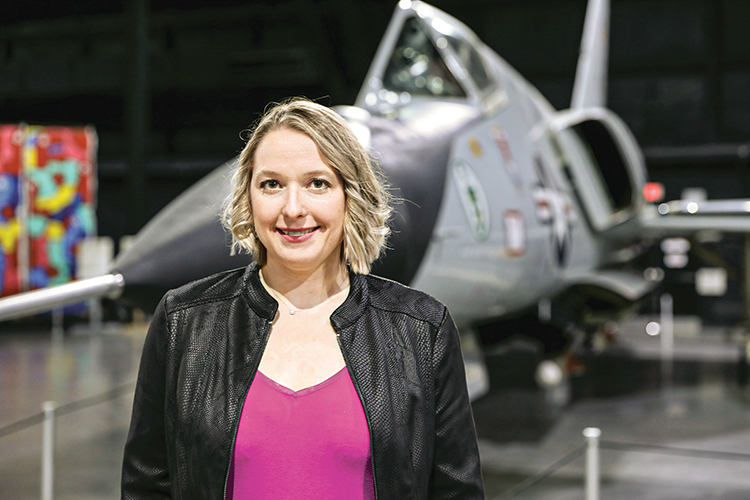The United States Air Force employs some of the most sophisticated technology in the world — using futuristic aircraft, hi-tech satellites, and cutting-edge drones in its mission of keeping America safe. But without the humans controlling that technology, all of it would be useless. “We’re such a technology-focused world right now, but sometimes we forget about who’s going to end up using that technology,” says Anne Cybenko ’05, deputy executive director of the Air Force Research Laboratory (AFRL), headquartered in Dayton, Ohio.
As a psychologist, Cybenko worked for years researching the interaction between people and machines — exploring how human and artificial intelligence can together be more than the sum of their parts. Now, in her current role, she oversees the welfare and working environment of the Air Force lab’s 11,200 employees across 10 states. “My focus is always on the person,” she says, “using my understanding of human behavior to create an environment where people want to work.”
Growing up, Cybenko initially wanted to be a doctor. But arriving at Colgate to study pre-med, she got hooked on psychology during a first-year course on the malleability of the human mind and memory. “I thought, if I could do this for the rest of my life, I’d be happy,” she says. She dove into the program, headed the Colgate Psychology Club, and spent three summers in Professor Rick Braaten’s lab studying memory in songbirds.
“My undergraduate experience taught me how to do research,” she says. “If I had an idea, it was always encouraged.” In another course at Colgate, Cybenko studied psychology and the law, which ended up being the focus of her PhD work at University of California–Riverside. She then took a postdoc at the University of Dayton Research Institute, supporting the Air Force. There, she became fascinated by a project applying psychology to military intelligence.
She began exploring questions of how humans interact with technology, eventually becoming a researcher in the AFRL’s 711th Human Performance Wing. “There’s no point in creating a machine that does something a human is already good at — so we want to figure out what are humans not good at, and create tools to do that.” One of her projects, for example, focused on how Air Force intelligence officers could effectively use publicly available sources, such as social media platforms, to augment other sources of information to create a better picture of military threats. “We’re talking about the life and death of U.S. citizens here, so determining what’s real and what’s fake is vital,” she says.
Promoted to her new role as deputy executive director last November, Cybenko brings the unique perspective of someone who was recently a scientist herself; already she has cut through some military bureaucracy so researchers in different fields can work together in a more effective, multidisciplinary way. “I’m fighting for the bench scientist, who is in turn fighting for the war fighter,” she says. “There’s no better mission than helping the Air Force — they’re the ones that protect our country, and I am lucky to have a part in that.”

